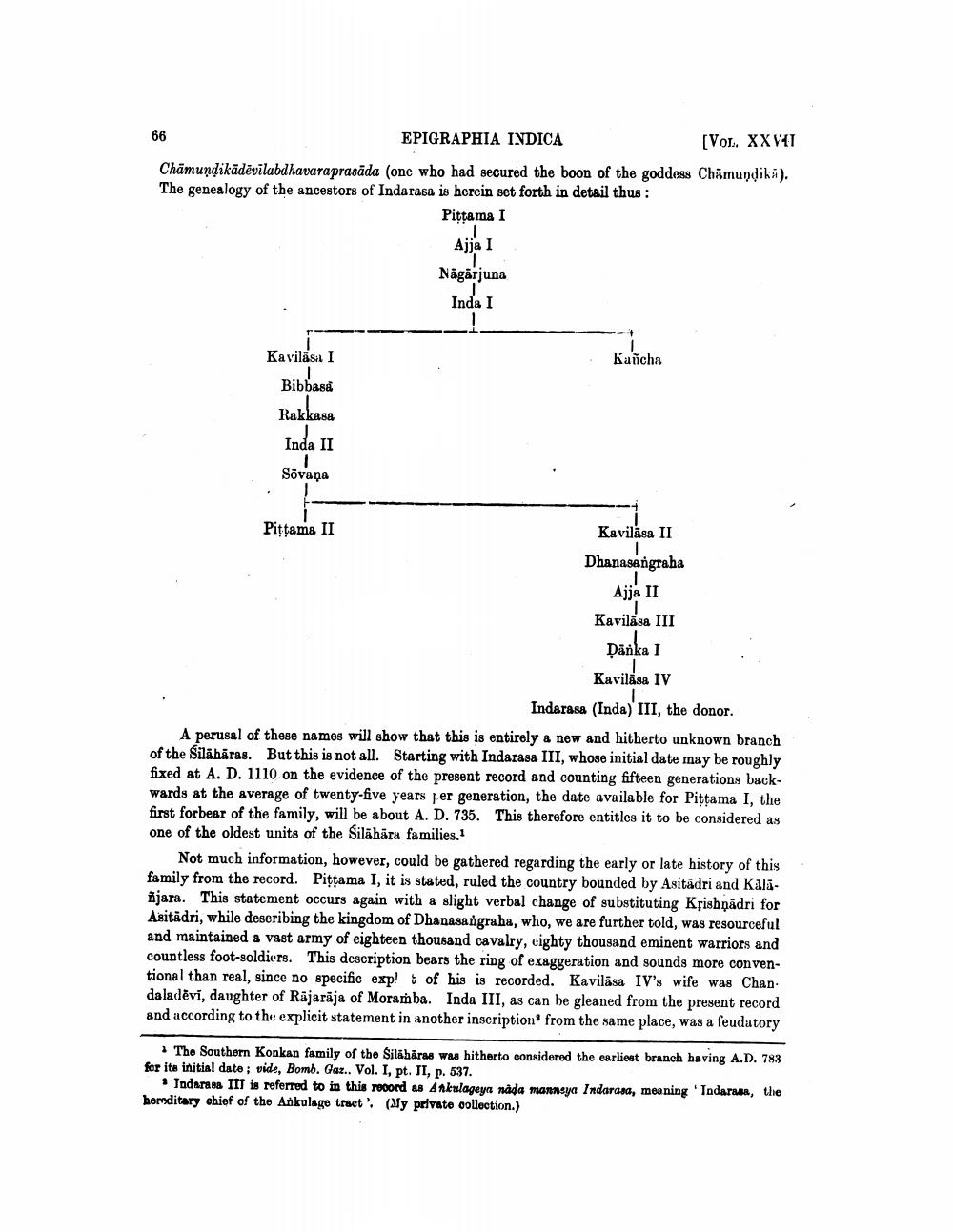________________
EPIGRAPHIA INDICA
[VOL. XXVII Chamundikādēvilabdhavaraprasāda (one who had secured the boon of the goddess Chamundika). The genealogy of the ancestors of Indarasa is herein set forth in detail thus :
Pittama I
Ajja I Nagarjuna
Inda I
Kavilása I
Kancha
Bibbasa
Rakkasa
Inda II
Sõvaņa
Pittama II
Kavilása II Dhanasangraha
Ajja II Kavilāsa 111
Danka I
Kavilāsa IV
Indarasa (Inda) III, the donor. A perusal of these names will show that this is entirely a new and hitherto unknown branch of the Silahāras. But this is not all. Starting with Indarasa III, whose initial date may be roughly fixed at A. D. 1110 on the evidence of the present record and counting fifteen generations backwards at the average of twenty-five years per generation, the date available for Pittama I, the first forbear of the family, will be about A. D. 735. This therefore entitles it to be considered as one of the oldest units of the Silāhāra families.
Not much information, however, could be gathered regarding the early or late history of this family from the record. Pittama I, it is stated, ruled the country bounded by Asitādri and Kalā. õjara. This statement occurs again with a slight verbal change of substituting Krishņādri for Asitādri, while describing the kingdom of Dhanasangraha, who, we are further told, was resourceful and maintained a vast army of eighteen thousand cavalry, eighty thousand eminent warriors and countless foot-soldiers. This description bears the ring of exaggeration and sounds more conventional than real, since no specific exp! of his is recorded. Kavilāsa IV's wife was Chandaladēvi, daughter of Räjarāja of Moramba. Inda III, as can be gleaned from the present record and according to the explicit statement in another inscription from the same place, was a feudatory
* The Southern Konkan family of the Silábäras was hitherto considered the earliest branch having A.D. 783 for its initial dato ; vide, Bomb. Gaz.. Vol. I, pt. II, p. 537.
• Indarasa III is referred to in this record as Ankulageya nada mannsya Indarasa, meaning 'Todarama, the horditary shief of the Ankulage tract: (My private collection.)




